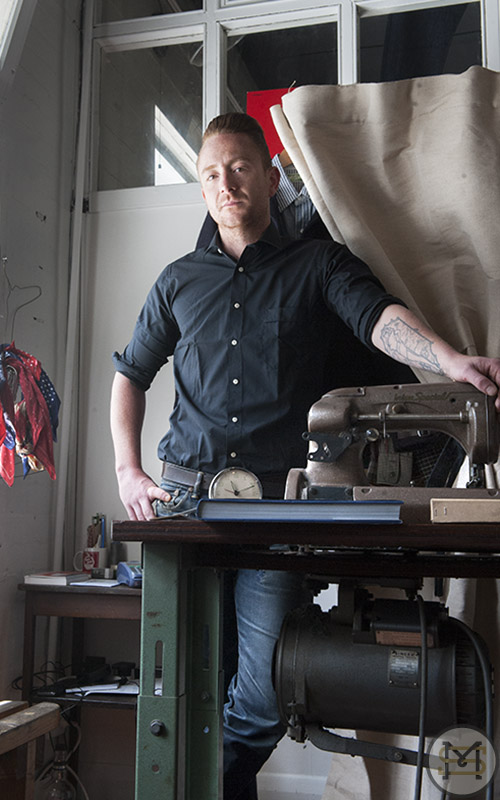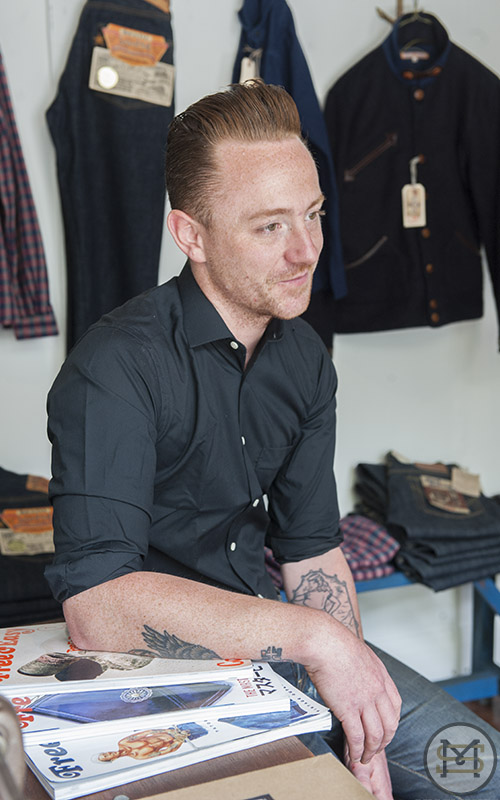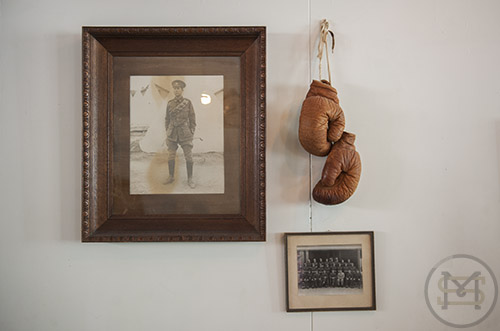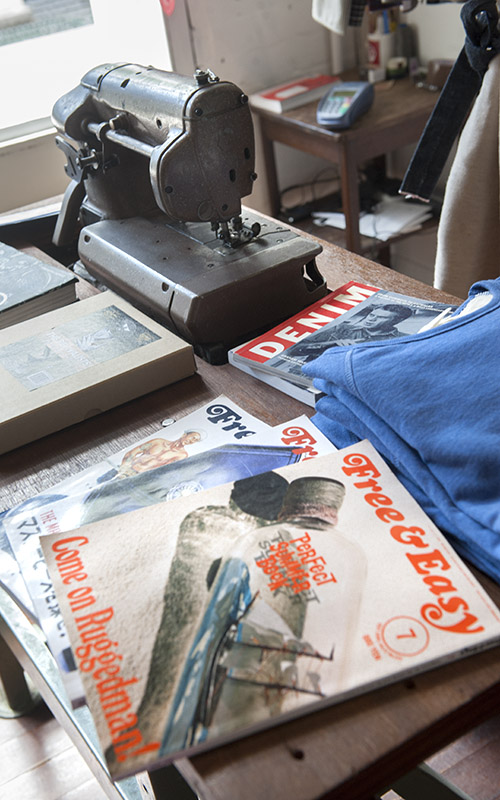Interview: Christopher Pickings
“Global economics and the way things are happening in the world are changing people’s perceptions on what quality is. People are wanting to see the craft, to see an actual basis of quality behind something that’s expensive.”
- Christopher Pickings
Legitimacy is written all over Chris Pickings. Born and raised in Newcastle, England, he looks every bit the retro incarnation of the old-school butcher’s son, outfitted in his heavy denim and William Lennon boots, a living expression of the working class style encapsulated in his new men’s store, Pickings & Parry.
But – unlike so many of today’s tattooed, moustache-twirling set – Chris proves the rare exception: a person less possessed of romantic notions of nostalgia than a man preserving the legacy of a family that continues to espouse the traditional values of a bygone era.
Chris: “My grandfather was a train driver who became a butcher with a shop in a village called East Boldon, a business that my father took over, that my mother ran until she passed away six years ago and that my sister and I continue to run. It makes no money but it’s been in the family for 60 years, it employs people, and so we keep it.”
His words reveal much, of both his working class roots and the strength of character run through with a seam of integrity that serves as the foundation of his personality – a characteristic that harks back to his grandfather’s time.
Perhaps it was the early death of his father that instilled such strong personal values: lost to him at the age of 10, Chris spent his teenage years absorbing the legacy that was left to him, continually flicking through his father’s collection of ‘60s motoring magazines and adopting his wardrobe of leather jackets as a way of being close.
It is easy to imagine all those years of immersion have found themselves expressed in Chris’ store, a showcase of classic work wear styles given a modern twist. And all of it set against a backdrop of old-school barber’s chairs, shears humming to the buzz of the 50-year-old Faema E61 coffee machine on the shop counter.
Chris: “The store is a working class gentleman’s club and I guess that’s what I’m trying to recreate – to change the buying culture back to that idea of working hard for the money and spending it on good things that last.”
He points to his aforementioned William Lennon boots.
Chris: “These have been made in the same way for 100 years and the great granddaughter of the founder is still the sales person for the company. It’s the same family, the same factory, the same nailed soles.”
For Chris it appears there really is no compromise and you can’t help but feel his last are words imbued with more than a little personal meaning.
Chris: “In the past people would think nothing of buying a Louis Vuitton handbag just because of what it was, not caring how it was made and where it was made. But that’s like an empty promise. If you buy something that is going to age with you and you can hand it on to your kids… well, those are the things that have a connection to who you are.”
126 Gertrude Street, Fitzroy
ph: (03) 9417 3390
e: info@pickingsandparry.com



























